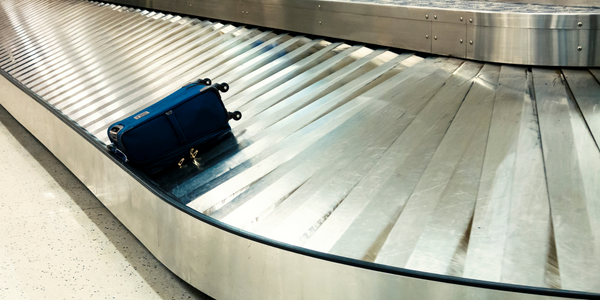IIC Smart Airline Baggage Management Testbed

- Platform as a Service (PaaS) - Data Management Platforms
- Aerospace
- Business Operation
Unlike the airline reservation systems with a limited number of global providers like Amadeus, Travelport, Sabre and Share, the ecosystem around the airports and airlines is heavily fragmented. There are no centralized systems that can unify all its stakeholders’ data such as: • Airline • Passengers • Airport vendors like baggage handling companies, fuel and catering providers • Airport tenant (shops, malls etc.) • Parking and ground transportation • Security (TSA) & Regulatory bodies Many luggage tracking systems at the moment are simply isolated mobile smartphone applications tied into a proprietary third-party web application using such things as Bluetooth baggage tags. The challenge that the Smart Airline Baggage Management testbed is addressing is bringing together and integrating disparate and isolated airline enterprise applications and systems into a single solution to better handle smart baggage across the airline and aviation ecosystems. GOALS The Smart Airline Baggage Management testbed, part of a broader aviation ecosystem vision, is aimed at reducing the instances of delayed, damaged and lost bags leading to lower economic risk exposure to the airlines; increasing the ability to track and report on baggage including location and weight changes to prevent theft and loss; and improve customer satisfaction through better communication including offering new value-added services to frequent flyers. The testbed is also aimed at helping airlines address the new baggage handling requirements set out by IATA in Resolution 753 requiring airlines to implement more comprehensive acquisition and delivery solutions for baggage tracking and handling by June 2018. This target is also outlined in the broader IATA 2015 White Paper titled “Simplifying the Business.”
*This is an IIC testbed currently in progress.* LEAD MEMBERS General Electric (GE), Machine to Machine Intelligence (M2Mi), Oracle SUPPORTING MEMBERS Infosys MARKET SEGMENT Airlines, Airports and Aviation Industry SOLUTION The Smart Airline Baggage Management testbed focus is to bring together fragmented applications and systems to drive solutions to make the airlines and airports more efficient during check-in and subsequent baggage handling across the aviation ecosystem for the benefit of passengers. The solution includes cloud-based airline applications and databases, cloud based analytics, and an M2M and IoT platform to connect, manage and secure realtime data and events from smart luggage. The testbed starts at remote check-in by the passenger and ends when the passenger retrieves their baggage at the destination and includes complete tracking and event reporting between those two points. COMMERCIAL BENEFITS The Smart Airline Baggage Management testbed will help airlines to comply with the IATA Resolutions on airline baggage handling being introduced in 2018 and will help to improve the visibility to the airline of the passenger and their baggage related needs end-to-end. It will allow airlines and other aviation partners to offer expanded services opening doors to new streams of revenue. Smart connected baggage will reduce the instances of delay, damage and lost bags leading to lower economic risk exposure to the airline and agony to the passenger. Today about 6-7 bags are lost for every 1000 per statistics from SITA survey and Department of Transportation (DoT). It costs airlines $100 to repatriate a delayed bag and risk exposure for lost bag is as much as $3300/bag in USA. With global airline passenger travel targeted to double in next 20 years, any such efficiency added to the baggage handling system will have a big economic impact. The target is to improve the airline passenger experience as they travel through the airports and reduce their total travel time. This in turn will improve the airline-passenger relationship. It will also help reduce the congestion at the airports due to delays. The increased operational efficiency will allow current airport infrastructure to handle more passengers and thus help to reduce lost productivity due to increased wait times. TESTBED INTRODUCTION GE Digital will be contributing the GE Predix® Cloud platform - already used extensively in the airline business - to to host the platform side of the testbed. Oracle will provide their airline, analytics and customer experience applications built on the Oracle Airline Data Model (OADM), Oracle BI and Oracle CX. M2Mi will provide the M2M and IoT device management, connectivity, data handling and instream analytics to connect edge devices such as RFID tags and gateways, smart baggage tags, smart luggage, airport baggage trucks, scanners and beacons to the platform applications. The M2M Intelligence® IoT application will run on GE Predix and the Oracle Cloud and will also provide policy management and enforcement, security and encryption using work done by M2Mi for the Department of Homeland Security, and will deliver the critical infrastructure to securely pass data and alerts to and between the GE and Oracle hosted applications. Supporting company InfoSys is project managing the testbed and providing systems integration expertise through their GE Predix and Oracle practices. Altoros is providing GE Predix UI and microservices development expertise and contributing work done developing RFID baggage tracking proof of concept applications on GE Predix. The testbed will use a range of RFID, Bluetooth, Cellular and WiFi baggage tags and baggage tracking devices. These will be deployed in smart tags, smart luggage, permanent and reusable bag tags, airport luggage carts and across the baggage ecosystem. Phase 1 of the testbed project will: • Provide a Cloud-based ecosystem to provide connectivity to assets like bags and passenger and airport/airline equipment. • Provide end-to-end visibility of bags to the airline, as it is checked-in, dropped and travels via the baggage carousel, bag trolley, aircraft, connecting airport to the destination bag-pickup. • Enable airlines to provide near-real-time view of their bag status to the customers.

Case Study missing?
Start adding your own!
Register with your work email and create a new case study profile for your business.
Related Case Studies.












